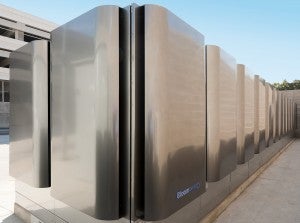Late yesterday, a three-judge panel in the 9th Circuit Court of Appeals granted an important stay motion in favor of California and its Low Carbon Fuel Standard (LCFS). The court’s decision allows the state to move forward with vital protections for human health and the environment that will strengthen California’s clean energy economy and improve our energy security.
The LCFS is one of California’s most ambitious and innovative climate change regulations to date. It is among 70 measures adopted under AB 32 (the Global Warming Solutions Act of 2006) that will be used to reduce emissions to 1990 levels by 2020. The standard calls for reducing the carbon content of fuels by 10 percent by 2020, which is expected to reduce 15 million metric tons of greenhouse gas pollution per year by 2020. Some of the cuts will come from improvements in the way traditional oil and ethanol feedstocks are produced, processed and delivered to consumers. Other cuts will come from advancements in breakthrough technologies such as electric cars and renewable fuels that dramatically cut toxic air contaminants and further diversify our fuel supply with locally generated energy sources.
How LCFS Works
The standard creates a flexible system that allows fuel suppliers to comply by either documenting reduced emissions in their fuel production pathways (using a science-based lifecycle emissions model) or by purchasing credits from suppliers that have reduced emissions below a predetermined threshold. This approach rewards innovative solutions that cut emissions as quickly, cheaply and extensively as possible, using a scientifically credible emissions reporting and trading platform.
How LCFS Provides Energy Security and Protection from Fuel Price Surges 
California drivers burn about 16 billion gallons of gasoline and 4 billion gallons of diesel fuel every year and emit, in aggregate, approximately 170 million tons of greenhouse gas emissions. Much of this fuel is sourced from California oil fields (approximately 200 million barrels per year), though more than 50 percent is imported from the Middle East, South America and Alaska. These imports make our economy vulnerable to price swings and shortages driven by production changes and politics.
There is perhaps no greater embodiment of our state’s vulnerability to imported fossil fuel than dramatic and sustained “price shocks.” These periods of elevated prices impact drivers’ pocket books and transfer huge amounts of money from California’s economy to foreign countries, many of which are hostile to our country.
Since 1995, California has experienced 15 such fuel price shocks, including the current one that has increased fuel prices by about 40 percent above the 24-month moving average. California’s LCFS, an important clean energy policy, is going to break this trend.
The LCFS Incentive to Diversify the Transportation Fuel Mix
California’s LCFS is a scientifically-based standard that provides incentives for fuels that cause less climate change pollution throughout their entire lifecycle. At the same time, the LCFS allows for traditional fuel producers to continue operating as long as they turn in sufficient compliance credits. Fuel sources producing credits include electricity (powering electric vehicles), natural gas, advanced biofuels and some traditional biofuels that emit less carbon than gasoline and diesel. These fuels are typically produced or grown in the Western United States rather than imported from abroad. This results in a more diversified fuel mix that is less vulnerable to fuel price shocks.
Positive Signal for States Looking to Follow California’s Lead
Though the Court of Appeals has yet to hear the case on the merits, yesterday’s ruling is a positive signal that this standard has a strong legal foundation that will likely be upheld on appeal and can be adopted by other states. We trust this is music to the ears of Oregon, which just last week announced a Clean Fuels Program similar to California’s.
Without a federal policy in place to regulate the carbon pollution in fuels, it is critically important that California and other states have the ability to carry out smart, science-based policies such as this standard to cut pollution, reward innovation, and build a stronger, more efficient economy.
EDF will continue pursuing the matter on appeal until a final resolution, an outcome that looks suddenly brighter for California consumers, innovative fuel producers and the environment.














